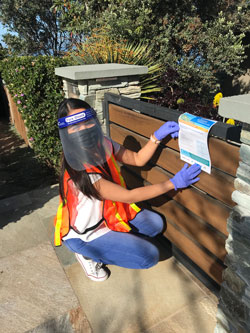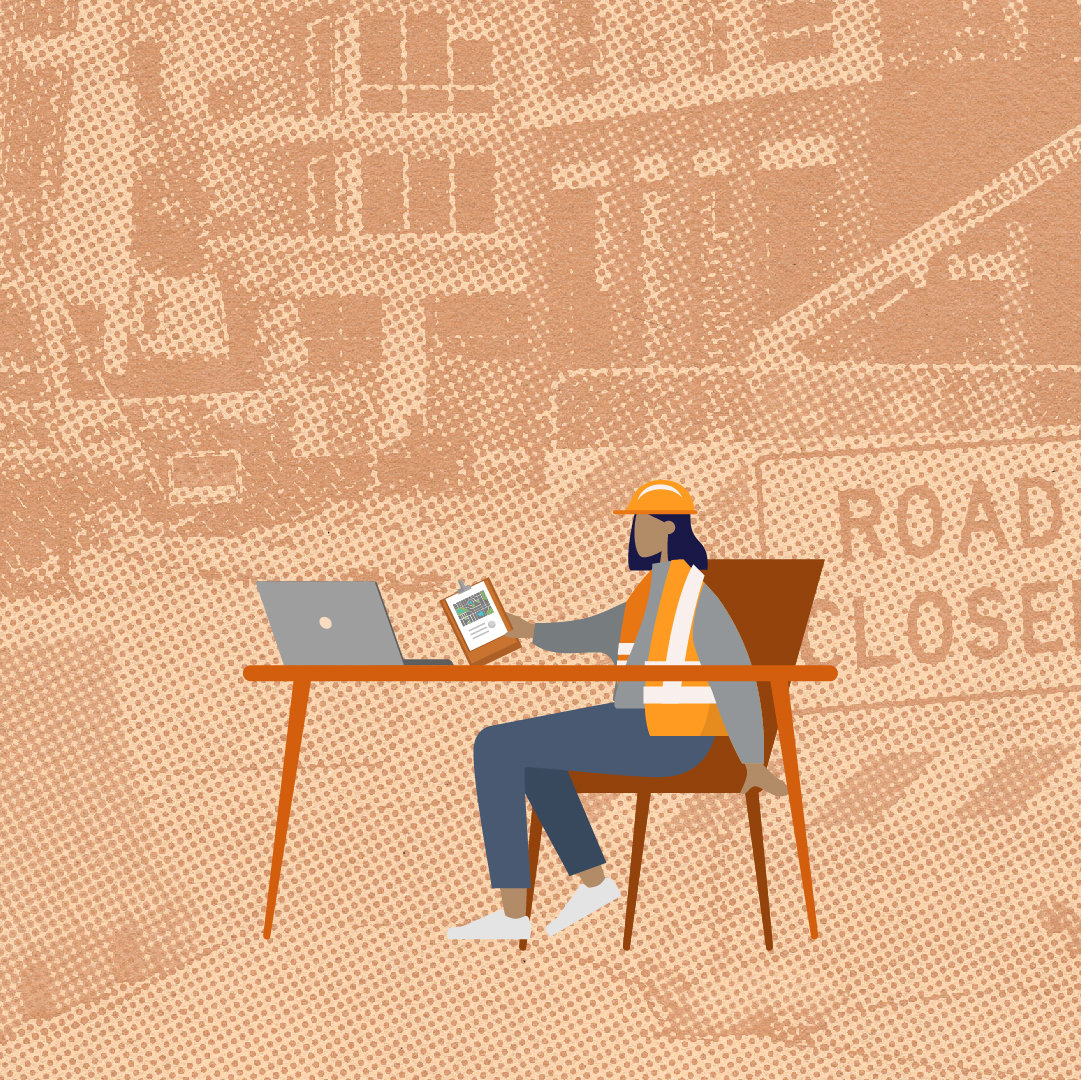
02 Mar Conducting Virtual Construction Relations in the COVID-19 Era
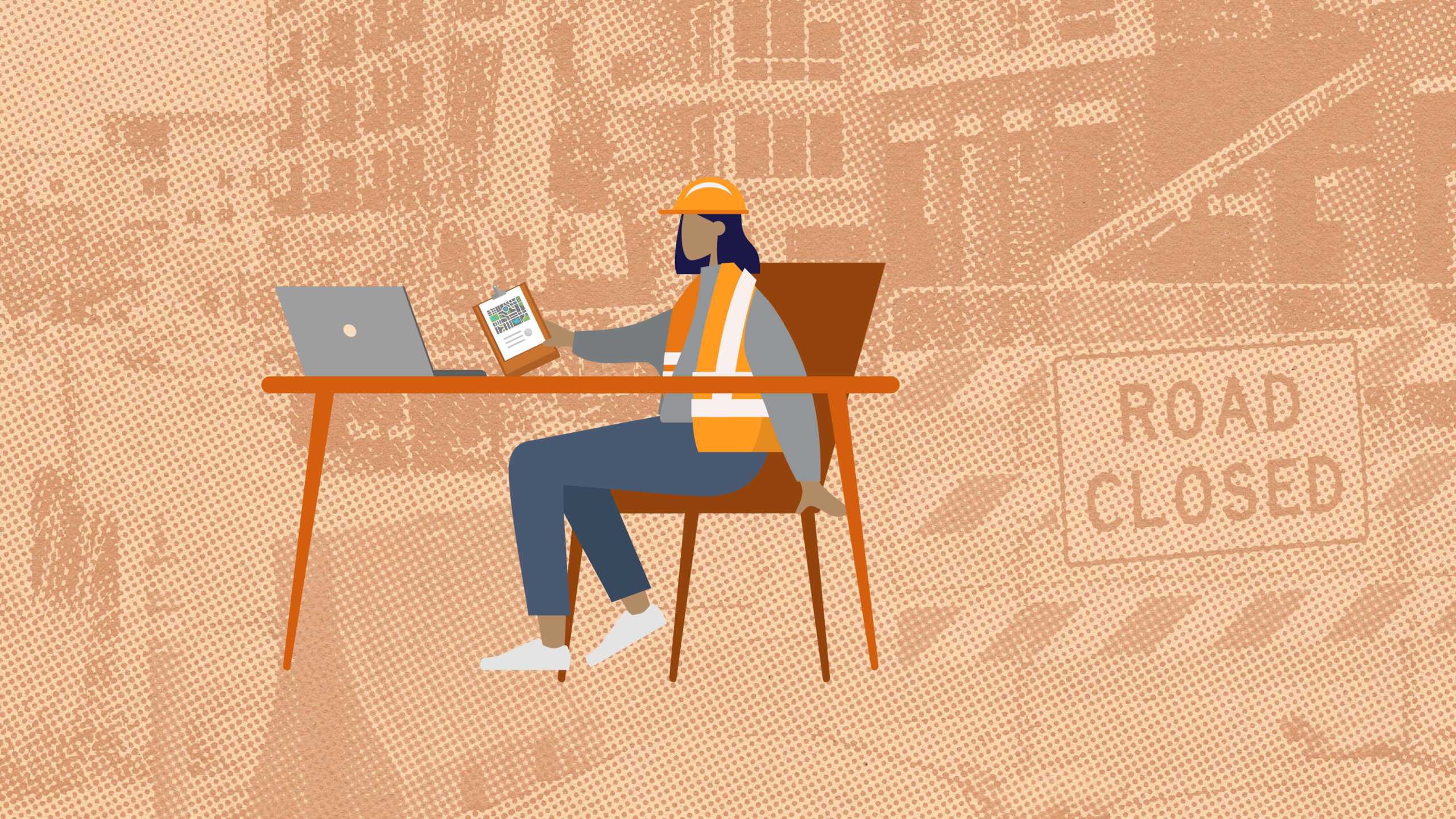
Where do you start when traditional face-to-face methods of construction relations are forced to go virtual? Transitioning public outreach methods to the online space comes with many pros and cons – especially when the overarching goals are often to provide transparency, build relationships and be proactive and responsive. When non-essential, in-person activities were put on hold in spring 2020, many public infrastructure projects, especially transportation projects, accelerated work leaving public outreach specialists to act fast in order to communicate with and involve impacted stakeholders.
As a K&A Account Executive, I have conducted public outreach on many transportation projects across the State of California. This includes the Mid-Coast Trolley project, one of San Diego’s largest transportation infrastructure projects; the OC Streetcar project, Orange County’s first modern streetcar; and the electrification of the CalTrain system, which connects over 60-miles of territory in the Bay Area.
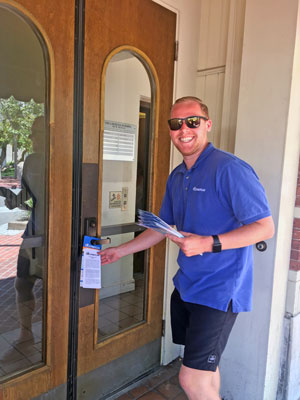 THAT WAS THEN
THAT WAS THEN
Prior to the COVID-19 pandemic, our teams completed in-person door-to-door outreach and one-on-one engagements with impacted stakeholders. We also held in-person meetings and attended community events to disseminate construction information to members of the public.
THIS IS NOW
Due to established stay-at-home orders, our outreach methods have had to shift to the evolving landscape. Emails, phone calls, virtual meetings, virtual events and social media/digital advertising are the tools we now use to notify the public about potential impacts.
Here are some tried and true tips that will help guide your virtual outreach approach during these unprecedented times:
TIP #1: An email or phone call is the new door hanger.
Typically, door-to-door outreach is the most effective method to reach all stakeholders who will experience construction impacts and for any construction activities with short notification timeframes. Before the pandemic, our team could canvas an entire neighborhood by using doorhangers. Now that door-to-door outreach is rarely possible, we use preexisting lists provided by our clients to call and email notices to stakeholders. These lists can never be 100% accurate, so it’s important to have a stakeholder outreach tracking database to record customer interactions and contact preferences, as well as to be able to provide contact information updates back to our client.
TIP #2: Mitigate impact to businesses with one-to-one virtual meetings.
Letting businesses know of potential impacts is a high priority for our clients. Businesses are already in the habit of holding virtual meetings, so they are generally receptive to one-to-one meetings via Zoom or a similar platform. For the Alvarado Pipeline project in San Diego, the K&A team contacted key business stakeholders one at a time and scheduled back-to-back meetings so the project team could focus on completing the outreach over the course of one day. The meetings were scheduled for 20 minutes each allowing enough time to present information and answer questions or address concerns.
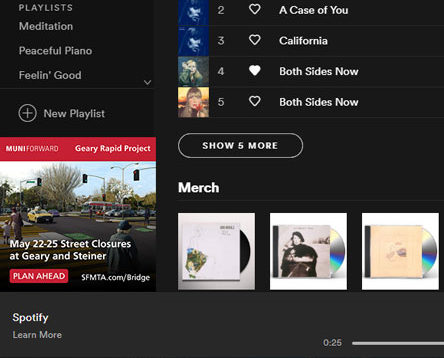 TIP #3: Digital ads and social media work for construction outreach.
TIP #3: Digital ads and social media work for construction outreach.
Social media engagement is a great way to keep community members informed about construction impacts. Using strategic social media analysis, project teams can target impacted stakeholders with promoted posts or ads that provide construction updates in real time. This type of targeting can ensure you are contacting the right people with the most timely and relevant information. For our client, San Francisco Municipal Transportation Agency, continuing construction necessitated closure of an intersection over a holiday weekend. Our team coordinated with the client and Spotify to produce an informative audio and digital ad. Through Spotify’s service we were able to “geo-target” the range of the signal for the ad, so it only appeared to listeners within a specified geographical footprint.
TIP # 4: Virtual events do have legs.
With in-person meetings canceled for the foreseeable future, online events can help fill the gap as an effective way to communicate about project milestones. As projects switched to online public meeting models, there has been an increase in participation of community members – and platforms such as Zoom Webinar, Social Pinpoint, SeekBeak, WebEx or Public Input provide the project team more control of the meeting format. For the El Portal Undercrossing project in Encinitas, Calif., the K&A team held a successful joint virtual meeting with an adjacent roadway improvements project for the community as a Zoom Webinar. This platform gave the project teams complete control of the format and attendee participation. For more information, check out this blog post.
FYI. Don’t expect virtual meetings to go away when in person events reconvene. Many agencies have seen an increase in audience reach and participation through virtual meetings. The future of public meetings will most likely move to a hybrid model where meetings will be held in person as well as a virtually for those unable to attend. The benefits of virtual meetings are that community members can participate from the comfort of their homes, avoid traffic and limit scheduling issues. Given the convenience factor of virtual meetings we predict virtual engagements are here to stay and ultimately allow community members to participate who otherwise may not.
TIP #5: Leverage Community Organizations
Ideally, you have already built partnerships with local community organizations to help you spread the word about your project. If not, start reaching out to local organizations that can help deliver project communications to their members for you. Having a “third party” include information about your project always increases public awareness. For example, K&A partnered with a nearby church for the OCTA Laguna Niguel to San Juan Capistrano Passing Siding project in San Juan Capistrano, Calif., where the team provided project information in the form of drafted eblasts, social media, stage remarks and newsletter blurbs that the church would then distribute to their entire membership and followers to inform them about the upcoming impacts. Without their help, the project team would not have been able to reach the thousands of patrons that frequent the church weekly. This method could be used with large community groups, religious organizations, schools or any other stakeholder groups such as HOAs.
TIP #6: If you must go door-to-door, suit up!
In the era of COVID, stakeholders might have concerns seeing a doorhanger left at their entrance without knowing who placed it there or if they were wearing a mask. Given these concerns, door-to-door outreach should only be used when absolutely necessary. If door-to-door outreach is deemed necessary due to the notification timeframe or impact severity, ensure all team members are equipped with the proper personal protective equipment (PPE), which should include a mask that covers the mouth and nose, gloves, and – for extra precaution – a face shield.
For more tips on how to tackle virtual engagements and construction relations in the COVID era, please contact us!

